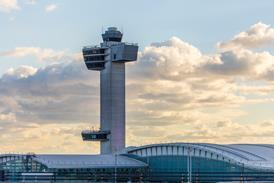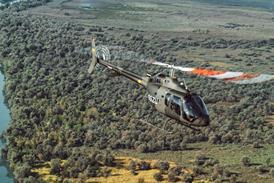KATE SARSFIELD / LONDON
The unrelenting bad news of the past 18 months has resulted in slow trading in secondhand aircraft, with prices falling and companies keeping aircraft for longer
These are anxious times for the used business aircraft market. It was the first to feel the economic slump after the 11 September terrorist attacks, while the Enron and Worldcom accounting scandals earlier this year have left the trade in its most depressed state for more than a decade.
"Things started to slow down when the first recession hit in March 2001," says Rick Engles, president of international business aircraft broker Vance and Engles. "Up to that point we had had a remarkable period of growth, but now there's two years' worth of supply for almost every type of business jet looking for a buyer."
Engles says more than 30% of the existing business-jet fleet is up for sale. "Around 3,500 aircraft are available. For example, of the 82 [Bombardier] Challenger 600s still flying, 33 are for sale; of the 500 Learjet 35s in service, 100 are available; and of the 250 [Dassault] Falcon 50s flying, 40 are looking for a buyer."
The Chicago-based company's co-owner and chief executive Jim Vance says the bad news of the past 18 months has produced one of the slowest markets in the broker's history. "As inventories have grown, so the value of corporate jets has dropped. Since March last year, prices for certain types have plummeted by more than 30% and sellers are typically forced to accept less money for an aircraft than they paid for it," he adds.
Large banks have the option of leasing out the aircraft while waiting for the market to recover. Private individuals and small companies that paid a higher price for an aircraft 18 months ago are less fortunate, as the amount of their outstanding loan probably exceeds the current value of the asset. "A Challenger 600 which would have sold for $11 million last year would now fetch around $6.5 million," says Engles. "A Gulfstream IV with a $23 million price tag 18 months ago would sell for about $18 million today. Even a low-time Cessna Citation X, one of the aircraft least affected by the market downturn, would sell for around $2 million less than before."
In a report published last month, US analyst JP Morgan says the asking price for in-production business jet models, such as the Citation X, is down an average of around 8% year-on-year, and their resale value continues to weaken. "Price deterioration is evident in all three market segments [large, medium and small aircraft] - but large types have been hit the hardest, now down by an average of 10%," the report says.
The turboprop market is also reeling, according to Johnny Gantt, chairman of specialist turboprop dealer Gantt Aviation. "The market is soft. We have around nine aircraft in our inventory, which is unusually high," he says. "Even our flagship [Raytheon Beech] King Air range, with a very low engine time [3,000-5,000h] is selling for around 10% less than a year ago. High time, early King Air models will go for a lot less," he adds.
Raytheon Aircraft blames the high used- aircraft inventory and low resale prices, particularly for jet-powered aircraft, for the collapse in the new turboprop market. The company says turboprops have been hit harder than jets and a large number of King Airs due for delivery in the second half remain unsold, despite dramatic cuts in production rates.
Dan Dickensen, chairman of aircraft dealer General Aviation Services, says the latest downturn should come as no surprise. "The economy revolves in 10-year cycles. However, each time there is a dip in the market, unforeseen events come along and exacerbate the problem." He adds: "Twenty years ago we were heading into recession and then the government withdrew investment tax credit on [business] aircraft, causing a further slowing of sales. In 1991 the economy had slowed again, and then came the Gulf War. Poor market conditions last year were exaggerated by 11 September."
Market stalls
This recession, like others before it, has been twofold in its effect. Not only has it severely affected the bottom lines and balance sheets of many companies, it is also forcing chief executives either to get more out of their ageing aircraft - or to sell and not replace them, so stalling the market.
The high-profile events at Enron and Worldcom have done little to further the cause of business aviation. Instead, the incidents have dented the industry's credibility, says executive vice-president of the National Aircraft Resale Association, Susan Sheets. "It has taken years to build a strong, positive and widely accepted image of business aircraft as working tools. Scandals such as these, where executives were known users of business aircraft [Enron is believed to have operated six aircraft and WorldCom two], could undo all the good work in no time," she adds.
She is convinced of the need for increased scrutiny of large corporations "if we are not to lose the ground we have gained". JP Morgan supports this, saying: "The media and the government have paid an increasing amount of attention to allegations of fraud and corporate excess over the past several months. In this environment, we believe corporate managements will think twice before authorising the purchase of a $20-40 million business jet."
If true, this is a severe blow to aircraft manufacturers. In their quest to sell new aircraft, they are having to accept used models as trade-ins, which they are forced to sell at a loss - or not sell at all. One manufacturer says: "Two years ago we were happy to take aircraft as trade-in on a new one as we could sell it within weeks. Now we are saddled with around nine aircraft in our inventory worth several million [dollars] and we cannot afford to wait until the market picks up."
JP Morgan says that the weak used-aircraft market will continue to force manufacturers to sacrifice margins in exchange for volume. If aircraft prices continue to drop, the cost of new aircraft could become "uneconomic relative to used aircraft", the analyst adds.
For manufacturers, a revival in used aircraft sales will be the catalyst for a new aircraft market upturn. "An increase in aftermarket activity due to rising demand will result in a drop in the number of aircraft for sale. This will allow aftermarket pricing to firm up and improve so that new aircraft become more attractive on a relative basis and manufacturers no longer face substantial margin pressure," says JP Morgan.
Charter hope
General Aviation Services' Dickensen says aircraft popular with charter operators will lead the recovery: "The charter market is thriving and, as consumer confidence returns, operators will begin to invest in more aircraft. Types within the $3-6 million range such as the Cessna CJ2 and Citation V and Raytheon Hawker 700 will drive the demand."
Meanwhile, some traders are casting nervous glances at the growing fractional ownership fleets, which they fear could eventually be sold on to the fragile used aircraft market when customer contracts expire within the next few years. Although fractional companies have not disclosed their plans, UK consultancy Airclaims says a large number of pre-owned fractional aircraft will enter the market; this could have a detrimental effect on the resale value of existing types. "Fractional aircraft will be high-time machines [flying on average around 1,000h a year], but with their good maintenance history, they should still be desirable," Airclaims adds.
Engles believes the large companies, such as NetJets, will create a dedicated, pre-owned fractional programme in an attempt to lower the cost of entry, and bring newcomers into the market. At NetJets, owners reaching the end of their five-year agreements are offered the option of buying a new aircraft share or staying with the existing aircraft and paying a higher hourly fee because the warranty has expired. This avoids depressing prices by dumping aircraft on to the used market at the five-year mark.
Fractionals have already contributed to the large used aircraft inventories, as increasing numbers of owners have disposed of their aircraft and acquired shares instead. Other obstacles hindering used market growth are the host of regulatory requirements being mandated for aircraft to ease congestion and increase capacity throughout European and US airspace. Business aircraft operators will have to undertake costly avionics upgrades if they want continued access to fuel-efficient flight levels and the major airports.
Add to this the increasing local opposition to the continued operation of older, noisier business jets, and some models, such as the Gulfstream II and Rockwell Sabreliner 60, may be forced out of the market. Engles says the most likely home for these "inefficient and noisy types" will be countries not subject to strict regulatory regimes, such as some in Africa.
Traders' individual interpretations of what will constitute a recovery appear mixed. Dickensen is convinced the market cannot drop much further and should soon begin to bottom out. "Most sellers are becoming more realistic about what their aircraft are worth today, and buyer interest, notably in low-time aircraft, is starting to return. These are always the first aircraft to sell, but the prices will remain low for some time," he says.
Stable market
In a recent survey of business aircraft dealers and brokers, sales agent Aircraft Shopper Online (ASO) found the resale market remained relatively stable throughout the second quarter, although there was a noticeable downward trend. ASO says that 39% of respondents "reported a decline in serious inquiries and 38% reported a decrease in aircraft sales". For the third quarter, ASO found 41% of respondents expected an increase in sales, 42% no change, while only 17% predicted a decrease.
On the positive side, for those looking for a bargain, the current market is ripe with opportunity. "If a customer wanted to trade up a year ago, it might have meant selling their existing aircraft and coming up with several million [dollars] more," says Engles. "Now it might cost their aircraft and a significantly smaller instalment to get a larger model with more range and cabin comforts."
Engles believes the market has not yet reached its lowest point. "While there is political and economic unrest combined with a mistrust of corporate USA, companies and individuals will continue to put off making long-term business decisions," he says. Like the "canary in the mine", the used aircraft market is a gauge for the business aviation environment, "but we don't expect it to start singing again for some time".
Source: Flight International























